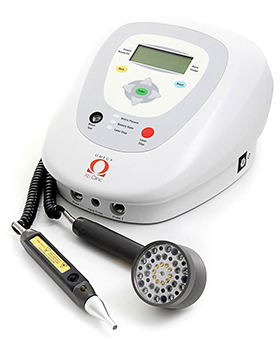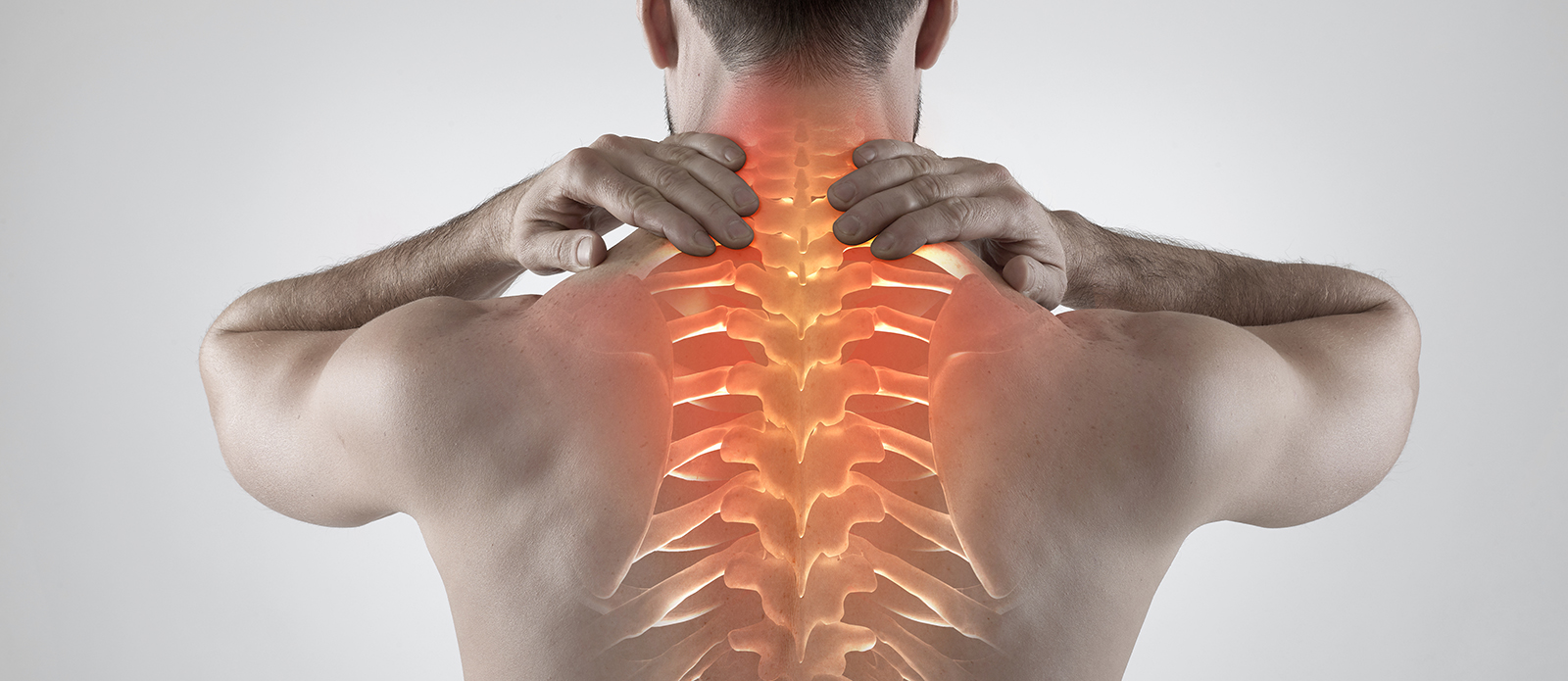Pain exacts a tremendous cost on our modern day society. According to the Institute of Medicine of the National Academies, approximately 100 million U.S adults are burdened by chronic pain in the United States alone. This astronomical number accounts for nearly a third of all Americans, with the most common pain issues including lower back pain, neck pain, nerve pain, sciatica, and fibromyalgia.
Aside from the obvious detriments, chronic pain can lead to increased blood pressure and heart rate, elevated risk of cardiovascular conditions such as heart disease, as well as a plethora of psycho-emotional issues including depression, anxiety and anger. As so many experience, pain signals can continue firing in the nervous system for weeks, months, and even years in some cases. While pain medications may be effective in the short term, they only serve as a bandaid to underlying causes of inflammation, are over prescribed, greatly overused and abused (ninety-nine percent of primary care doctors routinely prescribe potentially addictive opioid painkillers for longer than recommended), and pose a variety of risk factors that include potential addiction, weakened immune system, hormonal dysfunction, and a wide array of dangerous side effects.
Limited in options, modern medicine relies mainly on OTC anti-inflammatories, prescription opioids / NSAIDS, and surgery for managing pain. This leaves many who suffer from pain-related conditions searching for other therapeutic options. Fortunately, Innovative Medicine has scoured the globe and identified the most advanced and effective alternative therapies for pain relief. By shifting the focus of treatment to address root causes and effectively reduce inflammation without negative side-effects, these options offer patients and practitioners with viable solutions to chronic pain conditions like lower back pain, arthritis pain, neurogenic pain, sciatica, and fibromyalgia.
Here are the top 5 alternative therapies for pain relief
1. Low-Level Laser Therapy

Low-level laser therapy / LLLT (also referred to as cold laser therapy) is a non-invasive method of treatment where the body is exposed to laser light of low intensity. Differing from hot lasers that are used in the medical world for surgical precision (a market that is expected to reach $12.5 billion by 2022), cold lasers are used for healing precision through biostimulation of cells and tissues, thereby quickening the healing process. A fantastic alternative to surgery and/or drugs, LLLT is completely painless and has become a common modality to treat a wide variety of conditions from sports injuries to inflammatory conditions.
Applied by a special laser beam generator, the affected body part is exposed to a low-intensity laser which penetrates to various depths and produces photon energy. The energy is absorbed and transformed into biochemical energy, increasing blood flow and desensitizing local nociceptors (sensory neurons), decreasing or eliminating pain on site. Other applications of lower-level laser therapy include stimulation of acupuncture trigger points commonly associated with pain and inflammation. LLLT is extremely safe and highly effective in reducing inflammation and providing relief for both acute and chronic pain, and can be used for a number of ailments such as soft tissue injuries, arthritis, muscle spasms, carpal tunnel and fibromyalgia.
If you’re looking for proof that low-level laser therapy works, there are now over 300 published clinical trials on the therapy, many directed at low back pain, neck pain, tendinitis, and osteoarthritis. Findings of these studies have show that the median magnitude for pain relief is at least twice that of NSAIDS.
» Learn more about Low-Level Laser Therapy
2. Pulsed Electromagnetic Field Therapy
Pulsed electromagnetic field therapy (PEMF) is an alternative approach to pain relief that uses magnets to create pulsing, moving energy. The therapy is FDA approved for bone fusions and has been cleared in certain devices to reduce swelling and joint pain, particularly postoperative pain and swelling. Instead of using a laser light like in low-level laser therapy, PEMF utilizes a resonating magnetic field that creates currents without heat and directly alters cellular signaling. The pulsed electromagnetic fields create microcurrents in the body’s tissues which elicit specific biological responses depending on amplitude, frequency and waveform, and these frequencies prompt the therapeutic exchange of energy in a safe manner. In other words, energy waves change the way the body copes with pain. Since nerve cells are electrical, they are influenced by magnetic fields which activate various ions/charged particles that open up blood vessels allowing for better oxygen supply, which can affect how the nerves fire pain signals and actually quiet them down.
While acceptance of PEMF in clinical practice has been very slow in the medical community, randomized double-blind, placebo controlled clinical trials using PEMF therapy have shown beneficial effects for chronic lower back pain, neck pain, fibromyalgia, depression and many other conditions.
“The ability of PEMFs to affect pain is dependent on the ability of PEMFs to positively affect human physiologic or anatomic systems…research is showing that the human nervous system is strongly affected by therapeutic PEMFs”, Dr. William Pawluk, MD, MSc (source: Pain Management with Pulsed Electromagnetic Fields (PEMF) Treatment, March 2003).
» Learn more about Pulsed Electromagnetic Field Therapy
3. Neural Therapy
Neural therapy is a popular treatment for pain in Europe and utilizes local injections of anesthetics to treat disturbances in the body’s electrical system, also known as interference fields. Interference fields can be caused by a variety of infections, illnesses and emotional traumas, and consist of an abnormal electrical charge on the cell surface resulting in abnormal signals being sent from the nerves to the brain. By injecting a local anesthetic into the interference fields (which may be located in scars, trigger points, peripheral nerves, etc.), cell membranes are stabilized, normalizing the electrical charge. The process can be compared to a computer that freezes; in order to make it work again, it has to be turned off and rebooted. Similarly, the local anesthetic temporarily turns off the autonomic nervous system in the area applied and allows the interference to clear. This allows for improved cellular metabolism (removal of toxins and improved nutrient absorption), which can reduce pain.
According to a 2015 article published in the Journal of Pain & Relief, chronic pain is a significant contributor to morbidity, disability and financial loss throughout the world. In the adult population of western nations, 15% of people will complain of pain when surveyed at any given point. In a case referenced in the above article, a 40 year old male patient suffering from long standing neuropathic pain reported an 80% reduction in pain just one week after receiving neural therapy (source: Neural Therapy: An Overlooked Game Changer for Patients Suffering Chronic Pain?, May 2015).
» Learn more about Neural Therapy
4. SCENAR Therapy
First developed by Russian scientists for use by astronauts during space travel, SCENAR Therapy is a non-invasive advanced pain relief treatment which accelerates the body’s natural self healing abilities. The SCENAR device (self-controlled energy neuro adaptive regulator) utilizes computer modulated, electrical impulses to stimulate the brain; the SCENAR device then interprets the brain’s response and modifies its next impulse back to the brain to work at restoring balance to the body. This communication with the nervous system continues until equilibrium is achieved. As nerves are stimulated, the brain produces and releases more neuropeptides, enabling accelerated healing and often relieving pain instantly. This is different from other electrotherapy instruments because SCENAR combines energy measuring functions along with real-time feedback and constant adjustment to deliver just the correct type and amount of energy to the body.
A 2014 (non-clinical) study at RMIT University (Melbourne, Australia) analyzed 481 responses from people who had used SCENAR. It found average pain reduction of 70%, while 92% of respondents rated SCENAR as better than the other therapies they had tried (source: SCENAR – A New Approach to Pain).
» Learn more about SCENAR Therapy
5. Matrix Regeneration Therapy
Matrix regeneration therapy/MRT employs a modern and sophisticated medical instrument to facilitate a non-invasive, safe procedure that works to improve lymphatic drainage and regeneration of cells. A combination of three tried and tested modalities that work in harmony – petechial suction massage (a modern form of cupping), direct current treatment and bioresonance therapy – the effective principle is that pressure loosens clogged deposits and toxins in the tissues and redirects them into the lymphatic system to be removed. The simultaneous application of direct current causes the tissues to equalize their charge, a necessity for optimal cell functioning. Although the therapy is primarily performed on the back, all internal organs are accessed and blockages that impede the flow of energy in the body are relieved.
Cupping has been in the news quite a bit recently, and according to a 2015 study review in the journal PLOS One, cupping was found to be significantly more effective at reducing lower-back pain than non-steroidal anti-inflammatory drugs and physical therapy after a 3-month treatment period. Common conditions that benefit from MRT are musculoskeletal pain, chronic skin problems and neck and back pain.
» Learn more about Matrix Regeneration Therapy
How do I know which therapy is right for me?
Chronic pain often sets the stage for a complex set of physical and psycho-emotional changes in the body. With so many possible causes, precisely identifying the source of chronic pain can often be a challenge. While all of these alternative solutions are safe and effective for pain relief, a certain level of personalization and specificity is needed to identify the therapies that are most compatible with each person. By replacing generalized protocols, searching for root cause dysfunctions, and utilizing an array of advanced, sophisticated therapies, optimal health is able to be restored and sustained. Clinically applied at the New York Center for Innovative Medicine, this approach to healing has achieved steller results.





